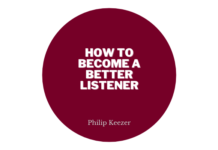Creating a great company culture brings huge benefits to your business – as I’ve written about here. Even the best company cultures can’t stop human nature however, and conflicts between employees will always be a reality that needs to be managed. Solving employee conflicts is a delicate task that you should be prepared for. Ignoring it, or just hoping it will solve itself can only lead to more problems along the way.
However, there’s no clear cut way of going about each individual conflict. All of them will be different, and you need to adapt to each situation with care, because a small misstep can actually worsen the situation rather than make it better.
That being said, let’s look at some common conflict sources, to understand where this problem stems from.
Common Conflict Causes In The Workplace
Experts posit that the most common cause for conflicts in the workplace are individual differences, whether they be personality, values, or politics-related. People have different opinions, and that will inevitably find its way into your office at some point.
However, that’s not always the source. Some conflicts can arise from workplace behaviours that are considered irritating by some employees, perceived inequities between employees, poor communication, or differences between what each employee sees as a “job well done”.
But conflicts can sometimes arise from systemic problems as well. Big company changes, like accelerated growth, mergers or downsizes can also have an impact on your employees and how they interact with each other. If you want to find out more about being a good manager during company changes, we have an article about it here.
Other systemic problems that can lead to conflicts include:
- Unmet needs in certain departments
- A lack of resources for projects
- Unclarified or overlapping roles
So these are the causes, but how do conflicts usually look like?
Identifying A Conflict And Stopping It In Its Tracks
Solving conflicts between your employees starts with identifying the conflict itself. Usually, a workplace conflict can take the form of:
- Harassment
- Bullying
- Insults
- Passive-aggressive behaviours
- Unkind remarks
- Heated arguments
But before a conflict reaches that boiling point, you can identify the hallmarks of it and stop it in its tracks. These hallmarks become apparent when you gain a better understanding of your company and employees.
For example, if you create a joint team of specialists, and you know two people that have a history of conflict are on that team, you can have a sit-down beforehand and get them to commit to a productive work environment before any conflict has a chance to crop up.
If you know two specific team members take a lot of pride in their work, but have professional differences in the way they approach a project, the same solution can prove extremely helpful.
In short, if you are able to identify differences in:
- Personalities
- Values
- Work ethic
- Routines
- Beliefs
Before you have two people working together, you can take measures to stop a conflict in its tracks. It doesn’t even have to be a sit-down from the get-go, you can simply keep a closer eye on the situation and only intervene if the signs of a conflict begin to appear.
However, let’s say you didn’t manage to do that and you now have a conflict on your hands. How do you go about solving it?
Steps To Solving Conflicts Between Your Employees
Before we get into each step, it’s important to differentiate between cases of abuse, and conflict. In a conflict, all the employees involved are at fault, and we’re going to explain how to solve that problem. In a case of abuse, like sexual harassment, you can’t just have a sit down and act like both parties need to “solve their issues”. When abuse is involved, it’s important to only blame, and discuss the matter with the abuser, sheltering the victim, and if soft-spoken words will not cut it, you may need to terminate the abuser’s contract, or even involve the authorities.
It’s not a happy situation, but in extreme cases it will be a problem you need to solve.
Once you’re sure you have a conflict, and not abuse on your hands, you can follow these steps.
#1 Have A Sit-Down In A Safe, Private Environment
In order to get all involved parties to cooperate, you need to make sure that your involvement doesn’t publicize the conflict. Involving all other employees by having a chat in the open workspace can only add fuel to the fire.
Try a conference room, or even your office, and make sure you have plenty of time set aside to go through the problem. If you feel overwhelmed, you can always involve a specialist, like a mediator, to help with this sit-down.
#2 Identify The Cause And Get All Involved Parties To Agree On It
The first order of business when solving conflict between your employees is to get all involved parties to agree on a cause to the conflict. If you see it, it’s not enough. The people that are having the conflict need to acknowledge the cause as well if you hope to find common ground.
However, you should tread lightly here. You can’t just come and say “Your egos are getting in the way of your work”, because it can escalate the conflict. Always aim to be diplomatic and soft-spoken in these situations.
#3 Let Everyone Speak Their Mind
Once you’ve set an example of how your talk should go, let each party involved make their case and explain why they are engaged in a conflict. You should listen actively, and take notes to make sure you understand where everyone is coming from.
Make sure your stance on what’s being said is neutral. Let everyone speak, and don’t take sides if you want to avoid escalating the conflict. This is when things can get a bit heated, and if you expect that to happen, it might be a good idea to set some ground rules in the beginning of your meeting.
#4 Work Together To Find A Solution
Pondering everyone’s stance, try to find common ground. A value that all the parties involved agree on. Then, use that common ground to work together towards a solution. If you need anyone to commit to a compromise, it’s important that you maintain neutrality and commit to a compromise yourself, or propose a compromise for the opposing party too.
For example, if two coworkers have heated arguments on the methodology to complete any given task, try to find an alternative that encompasses both methodologies. This is where creative problem-solving is a crucial skill. You might even want to take a break, think a solution through, and then have another sit-down.
And Remember
Even if you do a good job solving conflicts between your employees, the hatchet can always be dug up again. It’s important to monitor a conflict and make sure everyone truly committed to the solution agreed-upon.
Did you ever have to solve conflicts in the workplace?
How did it go?
I’d love to hear from you in the comments below!














